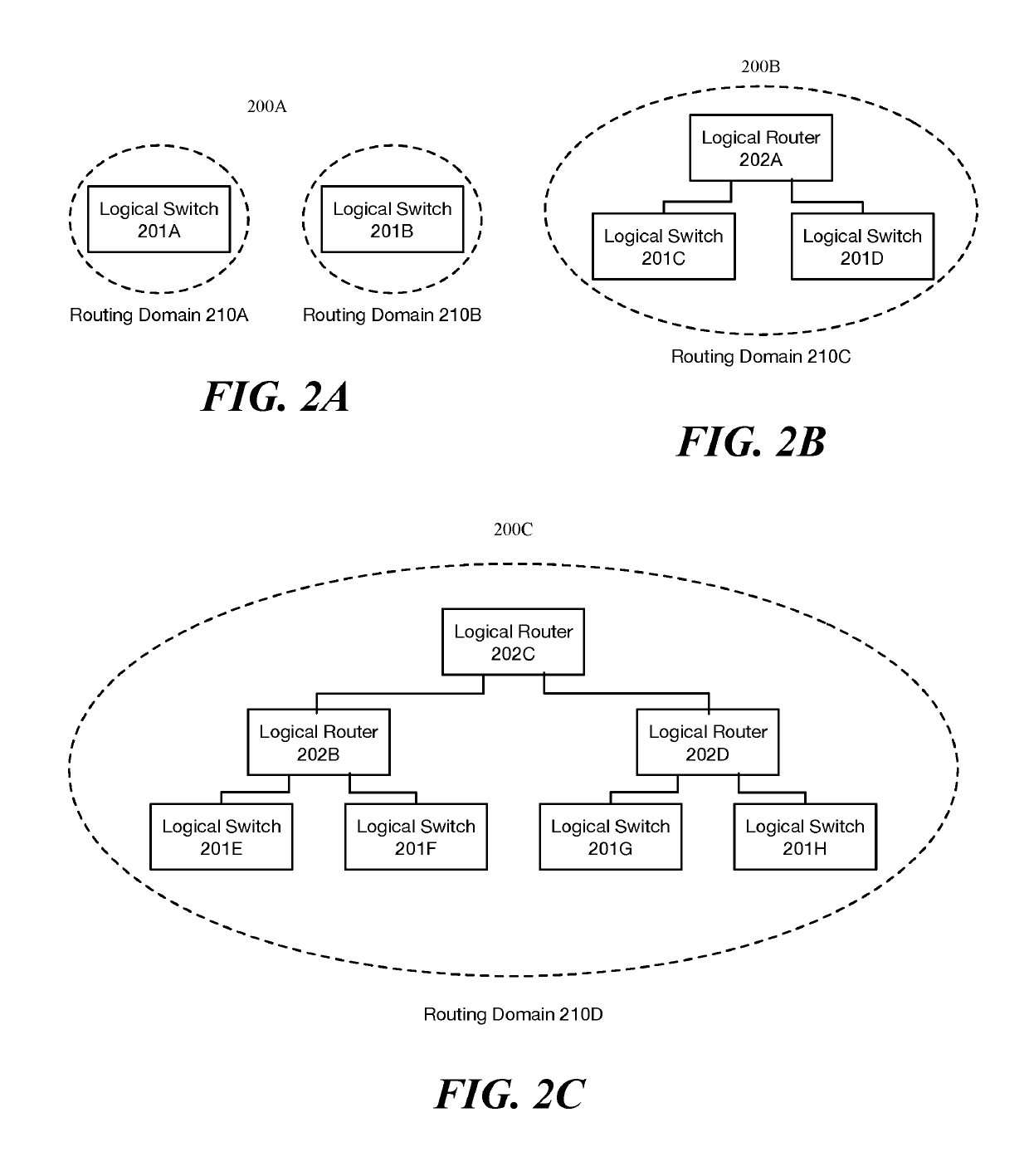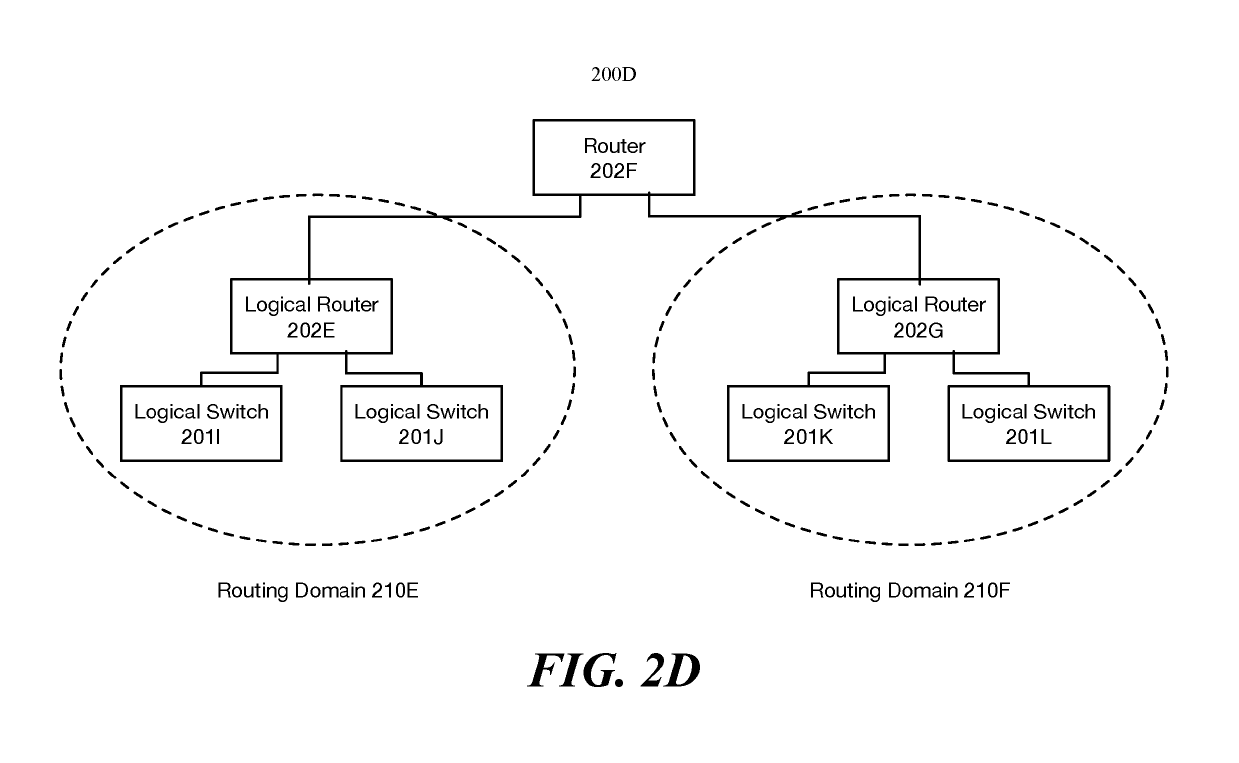Defining routing domain for distributed packet processing
a technology for routing domains and packet processing, applied in data switching networks, digital transmission, electrical appliances, etc., can solve the problems of ccp resources being burdened by large amount of data to send in addition to other control messages, and achieve the effect of facilitating packet processing and reducing memory and traffic load
- Summary
- Abstract
- Description
- Claims
- Application Information
AI Technical Summary
Benefits of technology
Problems solved by technology
Method used
Image
Examples
Embodiment Construction
[0018]In the following description, numerous details are set forth for the purpose of explanation. However, one of ordinary skill in the art will realize that the invention may be practiced without the use of these specific details. In other instances, well-known structures and devices are shown in block diagram form in order not to obscure the description of the invention with unnecessary detail.
[0019]For a managed network including multiple host machines implementing multiple logical networks, some embodiments provide a method that reduces the memory and traffic load required to implement the multiple logical networks. The method does this by using the concept of a routing domain. A routing domain as used in this disclosure refers to a set of logical forwarding elements (LFEs) (e.g., logical switches and logical routers) that are implemented on each host machine to perform first-hop logical forwarding, examples of routing domains will be provided in FIGS. 2A-D. In some embodiments...
PUM
 Login to View More
Login to View More Abstract
Description
Claims
Application Information
 Login to View More
Login to View More - R&D
- Intellectual Property
- Life Sciences
- Materials
- Tech Scout
- Unparalleled Data Quality
- Higher Quality Content
- 60% Fewer Hallucinations
Browse by: Latest US Patents, China's latest patents, Technical Efficacy Thesaurus, Application Domain, Technology Topic, Popular Technical Reports.
© 2025 PatSnap. All rights reserved.Legal|Privacy policy|Modern Slavery Act Transparency Statement|Sitemap|About US| Contact US: help@patsnap.com



